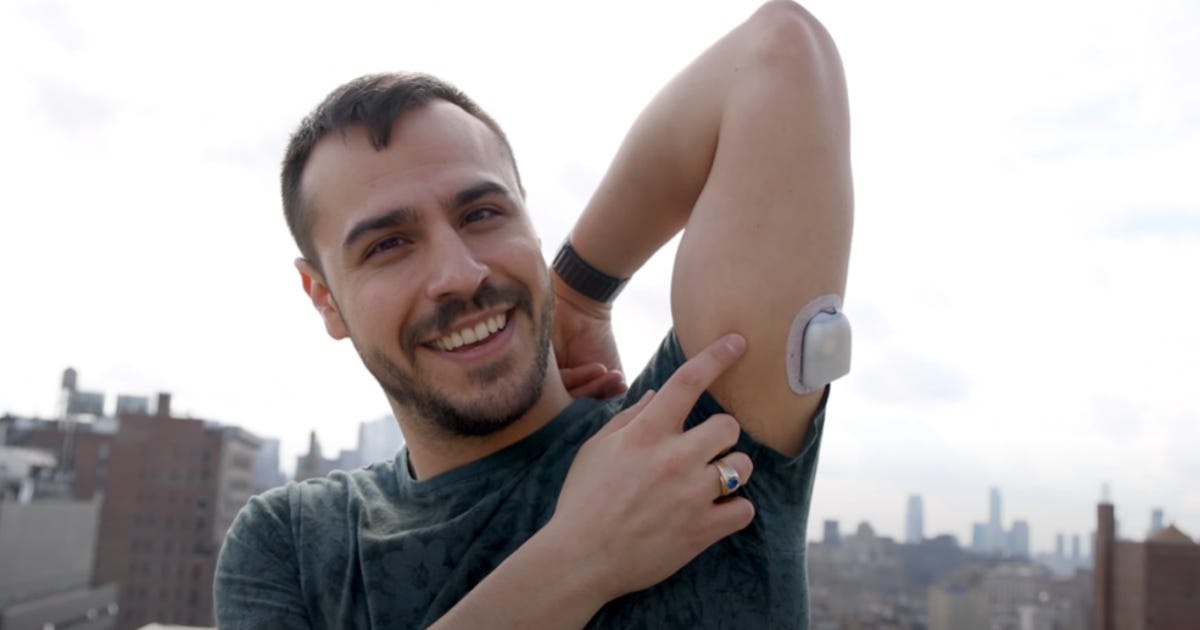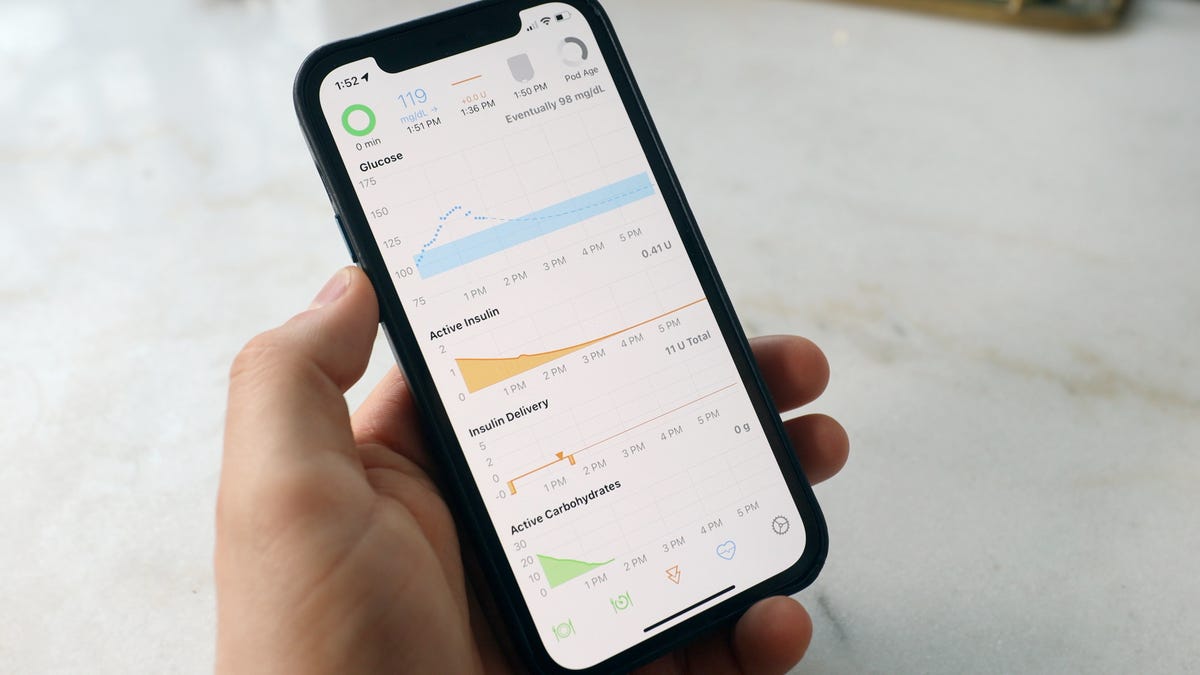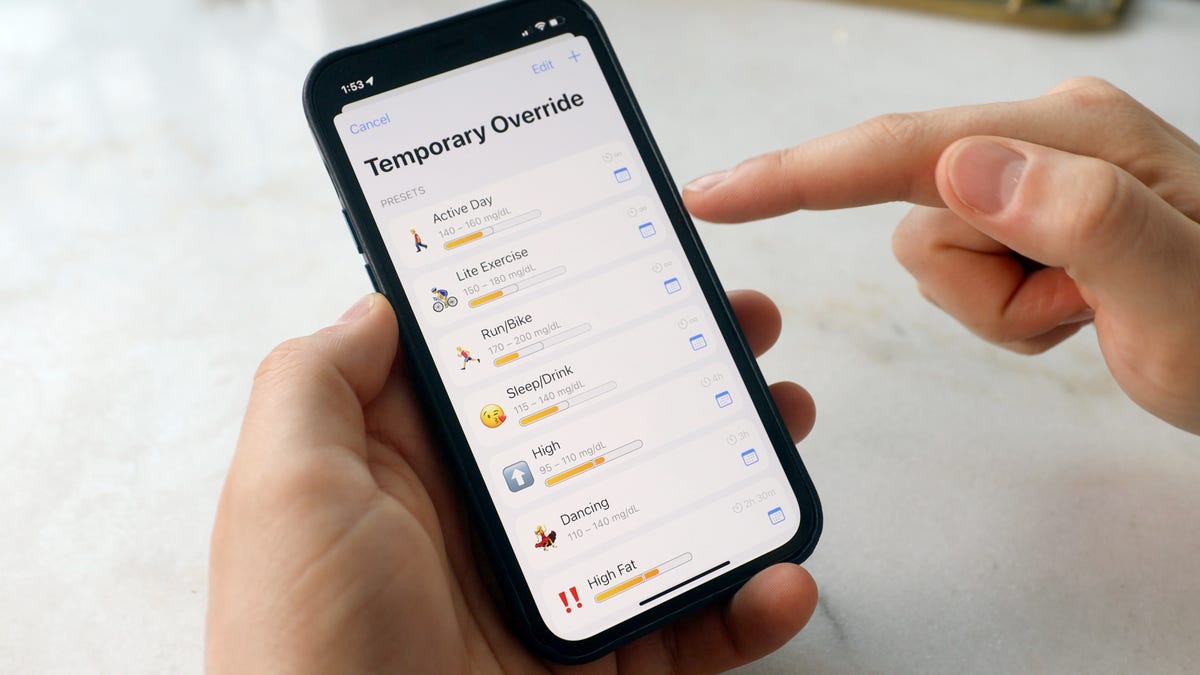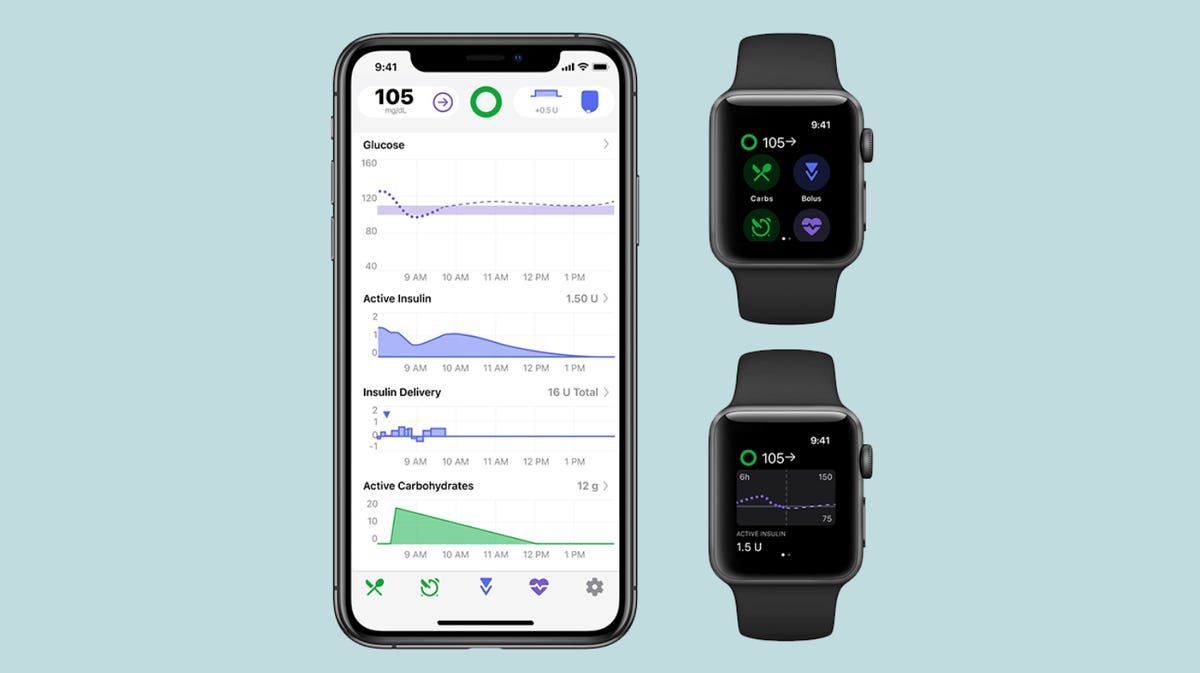
I Used Loop to Hack My Insulin Pump to Better Control My Blood Sugar Levels
I hacked my insulin pump for more control over my blood sugar levels, and I have no plans to use an approved system anytime soon. Before I get into that, here's some background on me.
In May 2021 I was diagnosed with Type 1 diabetes at the age of 30. This came as a huge shock with many life changes. I began using insulin, started wearing a continuous glucose monitor, or CGM, to track my blood sugar levels and got an insulin pump that I wear at all times. Soon after, I heard about an experimental open-source application called Loop that offers more flexibility and control over blood sugar levels, but it wasn't yet cleared by the US Food and Drug Administration.
Loop was built by a community of hackers known as #WeAreNotWaiting and released in 2016. The system regulates blood sugar levels using CGM readings and an insulin pump paired with a sophisticated algorithm running on an iPhone. The connection between these devices creates what's called a "closed loop system." Other closed loop systems approved by the FDA exist, but they don't offer as much customization and flexibility.

The Loop app dashboard displays pump and blood sugar data.
Justin Eastzer/CNETWith Loop, I can control my insulin pump with an iPhone and Apple Watch, which isn't possible on other systems. I can log carb entries based on absorption time of different foods, and the app will even estimate my actual carb intake based on its algorithm and the movement of my blood sugar levels. Loop also allows for customizable temporary overrides, which adjust my target blood sugar range and insulin needs during certain activities, such as working out or drinking alcohol.

Loop gives users the ability to create and customize temporary overrides to adjust target blood sugar range and insulin delivery.
Justin Eastzer/CNETThough Loop runs on an iPhone, it can't be downloaded from the Apple App Store. (Note: Apple recommends against this "sideloading" of apps.) I had to download files and build Loop myself using an Apple Developer account and Xcode on a Mac. As a tech-savvy person, I didn't have any trouble setting up Loop, but for others it may be a more difficult task. Luckily, that could soon change.
The nonprofit organization Tidepool wants to make Loop easily accessible to anyone who needs it. In January 2021, Tidepool submitted Loop to the FDA for clearance as what the agency calls an interoperable automated glycemic controller, an app that can be downloaded on the app store and be used with any pump. All pumps right now use their own proprietary software, but with Tidepool Loop, users would get to choose their own system.
We reached out to the FDA for comment and are awaiting a response.

Tidepool Loop isn't cleared for use in the US or outside the US. Displayed is a conceptual rendering of a product currently under FDA review.
TidepoolLoop currently works with the Omnipod Eros and older Medtronic insulin pumps, with support for the Omnipod Dash pump arriving in an upcoming app release. Supported CGMs include the Dexcom G4, G5 and G6, as well as Medtronic sensors connected to Loop-compatible Medtronic pumps.
Find out more about Loop's unique features and its origins by watching the video at the top of the article. And as a reminder, this is a DIY application that's not cleared by the FDA. Until it is, Loop will remain an "at your own risk" product. You can learn more about Loop here.
The information contained in this article is for educational and informational purposes only and is not intended as health or medical advice. Always consult a physician or other qualified health provider regarding any questions you may have about a medical condition or health objectives.
Source
Tags:
- I Used Loop To Hack My Insulin Pump To Better Control My Nikon
- I Used Loop To Hack My Insulin Pump To Better Control Of Health
- I Used Loop To Hack My Insulin Pump To Better Controlled
- I Used Loop To Hack My Insulin Pump To Better Synonym
- I Used Loop To Hack My Insulin Pump To Better Suit
- I Used Loop To Hack My Insulin Pump To Better Health
- I Used Loop To Hack My Insulin Pump Toilet
- I Used Loop To Hack My Insulin Is Cloudy
- I Used Loop To Hack My Hotpot
- I Used Loop To Hack My Facebook
- I Used Loop Tool
Blog Archive
-
▼
2023
(214)
-
▼
January
(80)
- Best Cheap Video Doorbells For 2022
- Dell XPS 13 (winter 2013) Review: Still Can't Touc...
- Lenovo Brings AMD To Its Gaming Laptops
- HP Elitebook Folio 9470m Review: Big Business Ultr...
- Elon Musk Shares Tesla Solarglass Pumpkin Torture ...
- Snap Snares New Users With Revamped Android App
- WhatsApp Expands Emoji Reactions For Further Messa...
- 10 Mobile Horror Games To Play In The Dark
- First Bendable OLED Gaming Monitor Announced By......
- You Don't Have To Live With These Default Windows ...
- Best Samsung Galaxy Z Flip 3 Cases
- Star Wars Costume Turns Real Two-legged Robot Into...
- Here's One Feature Samsung Could Use To One-Up Apple
- Home Equity Line Of Credit: HELOC Rates For Septem...
- Grab A Refurb 2-in-1 Microsoft Surface 3 Laptop Fo...
- 5 DIY Dog Toys You Make In Minutes
- Elon Musk Says Tesla's FSD Software Is Getting A P...
- Dorsey: Twitter 'will Probably Never' Add An Edit ...
- Get An Echo Dot For $1 When Signing Up For Amazon ...
- Apple Debuts Two New $49 Pride Edition Sport Loops...
- Low Storage On Windows 11? Here's How To Free Up D...
- Facebook Takes Center Stage In 'Super Pumped' Seas...
- Google's Pixel 6 Vs. Pixel 5: All The Biggest Diff...
- Fitbit Tips: 12 Tricks To Get The Most Out Of The ...
- HP Updates Elite Dragonfly And Folio Laptops At CE...
- The UK Will Issue Its Own NFT This Summer
- A Black Widow Pulsar Became The Heaviest Neutron S...
- CES 2021: Custom Mix Your Own Lipstick With This G...
- See The South Park Kids All Grown Up In Thanksgivi...
- Newegg's 72-hour Flash Sale Brings Big Savings On ...
- Facebook Takes Center Stage In 'Super Pumped' Seas...
- Tesla Solar Roof: The Sleekest Solar Option Isn't ...
- 3 Ways To Keep Your Heart And Brain Healthy
- CDC Recommends COVID Booster For Kids Ages 5 To 11
- Valve Confirms Steam Deck Will Be 'Multigenerational'
- After Luna Collapse, Terra Looks To New Blockchain...
- Twitter Accused Of Neglecting Security Problems: W...
- Who's Winning America's Electric Vehicle Race?
- Huawei's Legal Troubles Take A Twist With T-Mobile...
- Best Buy Will Now Haul Away Your Old TV, Appliance...
- Protecting Your Privacy In The Post-Roe US
- Amazon Uses Snapchat To Send Exclusive Deals
- 6 Ways To Haggle A Cheaper Gym Membership
- Dinosaurs Look Real In Trailer For 'Prehistoric Pl...
- Get Up To $25 Off Nintendo Switch Games Right Now
- Consumer Groups Urge Scrutiny Of Google's Fitbit B...
- Is The US Job Market Still Strong? Answers To Your...
- Google's $199 Pixel Buds Pro Add Active Noise Canc...
- Scott Hall, Pro Wrestler Known As Razor Ramon, Die...
- Hyundai Debuts Wild 670-hp Hydrogen Plug-in Hybrid...
- Final Fantasy XIV Endwalker Early Access: Start Ti...
- Best Personal Loans For Bad Credit For August 2022
- Dell XPS 13 OLED (9310) Review: Beautiful Design T...
- How To Update Disney Plus Parental Controls Now Th...
- 6 Spooky Google Home Tricks (and Treats) To Try To...
- I Used Loop To Hack My Insulin Pump To Better Cont...
- 2023 Porsche Taycan Range, Software Upgrade Coming...
- Adobe Lightroom Is Getting More Powerful With AI-b...
- Google Play Protect Helps Keep Malware Off Your Phone
- Wordle: The Absolute Best Start Words, Hints And Tips
- My Favorite 'Cheap' Motorola Phone Is On Sale For ...
- Take Your GoPro On A Dive With This Seawolf Remote...
- Twitter Bans Sharing Photos, Video Of People Witho...
- Netflix Aims To Start Charging You For Password Sh...
- Tesla Sold $936M Of Bitcoin, Kept Its Dogecoin Res...
- Tidal Adds Free Tier To Its Music Streaming Service
- Facebook Removed More Than 20 Million Posts For CO...
- Get 16 Free Kindle Kids Ebooks From Amazon For Chi...
- Alex Jones Sandy Hook Trial: Jury Finds Jones Must...
- Windows 11 Finally Adds Android Apps. Here's How T...
- 2022 Hyundai Tucson Plug-In Hybrid Review: Practic...
- Last Day To Save On Apple, Bowflex, Echo And More ...
- TikTok, YouTube, Snap Say Child Safety Is A Top Pr...
- How To Get Peacock Premium Free If You Already Pay...
- WhatsApp Starts Rolling Out Option Of Encrypted Me...
- Billions Of People Globally Still Can't Afford Sma...
- The Great Resignation Hasn't Hit School Teachers Y...
- Netflix: All The TV Shows And Movies Coming In Mar...
- 2023 BMW I4 EDrive35 Introduces A Smaller Battery,...
- One Of My Favorite Cheap Smartwatches Is Now Even ...
-
▼
January
(80)
Total Pageviews
Search This Blog
Popular Posts
-
Speech pathologist job openings, birth to 3 speech pathologist job state of kansas, speech pathologist job new zealand, traveling speech pat...
-
Br1m 21 years tobymac, br1m 21 years lyrics, br1m 21 years olds, br1m 21 years toby, br1m 21 years ago, br1m 21 years anniversary, br1m 21 y...
-
Kerastase chronologiste perle, kerastase chronologiste, kerastase chronologiste mask, kerastase chronologiste treatment, kerastase chronolog...
